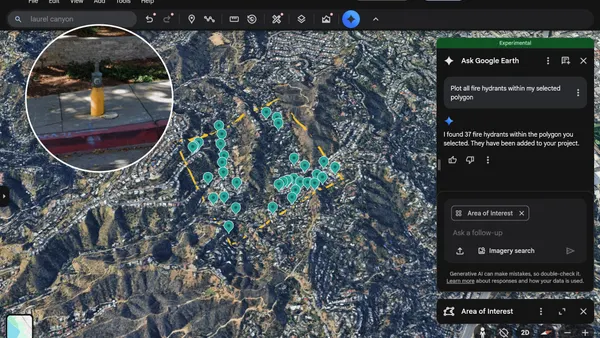Dive Brief:
- The owner of a virtual reality technology firm has sued Skanska AB/Skanska USA Building Inc., DPR Construction Inc. and Schneider Electric SE/Schneider Electric USA Inc. in its latest round of patent infringement lawsuits.
- Texas-based Virtual Immersion Technologies LLC (VIT) claims that the companies infringed on the patent for its VR theater system by using an "immersive, interactive virtual reality system in which there exists three-way communication among and between participants, live performers and the virtual reality environment." The lawsuits allege that each of these companies gained a competitive edge and benefited financially from using the system.
- VIT acquired the ownership to the patent in 2016, according to the complaint, and since then has filed more than 40 patent infringement lawsuits targeting companies in all sectors, including Netflix, General Dynamics, Lockheed Martin Corp. and Ford Motor Co. Other construction-industry defendants included in VIT's prior legal actions include Turner Construction Co., M.A. Mortenson Co., Gilbane Inc. and Jacobs Engineering Group Inc. VIT has withdrawn litigation against those four firms and others.
Dive Insight:
Representatives of Skanska and DPR told Construction Dive that they do not comment on pending or active litigation. Gilbane declined to comment, while Turner, Mortenson and VIT's attorneys did not respond to requests for comments before press time. Jacobs said that VIT dropped its lawsuit against the company because their VR technology did not relate to the VR identified in the patent.
Many construction companies have incorporated virtual and/or augmented reality into their operations whether to improve safety, to give customers a way to see what their completed structure will look like in advance or to work out potential changes or design clashes.
So, given that more and more contractors will likely use VR/AR technology in the future, when should they start worrying about these kind of lawsuits?
According to intellectual property attorney Steven Greenberg in the West Palm Beach, Florida, office of Shutts & Bowen, it costs an average of $1 million and three to five years to defend a patent infringement lawsuit, so settling is often the most attractive route for defendants. And a plaintiff is likely going to go after those companies that have deep pockets if they are simply looking to cash in.
Therefore, even if a third-party vendor set up the system that prompted the lawsuit and the defendant unwittingly infringed on a patent, if the small vendor doesn’t have the money to make an attractive settlement the plaintiff is likely to look elsewhere for satisfaction, he said, although that’s no guarantee that the plaintiff won’t look for a settlement figure the small company can afford.
“The plaintiff,” Greenberg said, “can sue whoever the plaintiff wants.”
To protect themselves, he said, contractors should consider insurance. These policies set a maximum for out-of-pocket legal fees and cover the insured’s damages.
“Suddenly, that $1 million lawsuit is not a threat to me,” he said. “My nuisance value is what I have to pay in out-of-pocket (costs).”
It might seem to some contractors that these patent lawsuits are something only the Skanskas of the world have to worry about, but, in reality, any system or technique that a contractor thinks is unique to them could have been patented by another company.
“It’s typical, and it’s likely,” he said. “The only question is what is the risk of somebody owning a patent feeling motivated enough and funded enough to sue another party.”
Even though there are “trolls” who bring nuisance patent suits, Greenberg said, most patent infringement suits, he said, are between competitors and must promise a payout of more than the $1 million in litigation costs.
“Most patents don’t have that quality,” he said, “and most people prefer not to engage in litigation.”
The bottom line, Greenberg said, is that contractors using technologies “beyond screwdrivers, saws and hammers,” should budget for future patent issues so that the potential resulting disruptions can be kept to a minimum.
Also, he said, contractors should consider patenting the innovative techniques they develop. Otherwise, another firm could duplicate those efforts and gain a competitive advantage.
Third, Greenberg said, is that contractors should be thinking about developing a defense against potential patent lawsuits. This includes researching where they think their competitors are headed as far as innovation and the development of new methods or products, and then developing on those ideas themselves and securing their own patents.
This way, in the event that a competitor files a patent lawsuit, he said, the contractor has some leverage in defending itself.
“The goal is when I am sued for infringement, if I happen to be an infringer, how do I get out of that lawsuit? And the answer is I have to have a weapon that [will allow me to] say, ‘I agree. I’m probably doing something wrong, but so are you. Let’s walk away.’”










